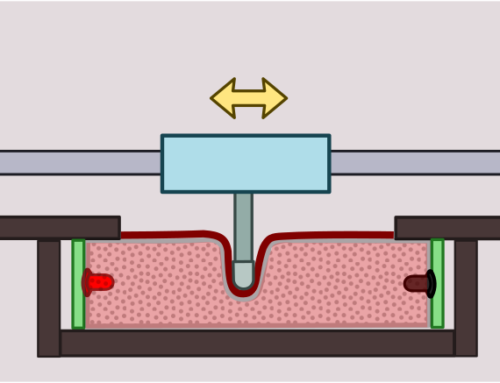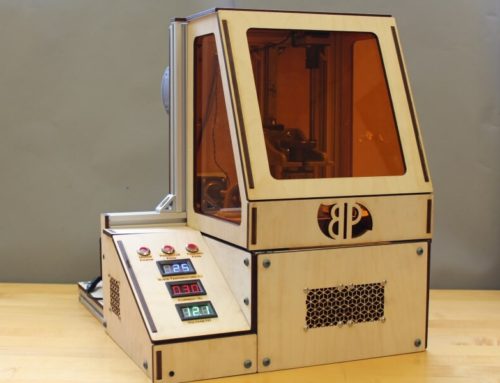Project Description
Overview
We have developed a hyperelastic light emitting capacitor (HLEC) that can expand its surface area by >635% while actively emitting light and sensing this deformation. The center layer is a thin sheet of silicone with embedded ZnS phosphors that glow under a high electric field. Transparent, ionically conductive hydrogel electrodes sandwich the center dielectric layer. These three active layers are then encapsulated in silicone to provide insulation from the high voltages (~2.5 kV) and to improve mechanical properties of the composite device.

A uniaxial stretch test is shown where the HLEC continues to emit light with >480% strain. As the device is stretched, the increased surface area and decreased thickness result in an increased capacitance. By measuring the capacitance of the HLEC, it is possible to use it as a strain sensor as well as a tactile sensor to detect externally applied pressure (e.g. a finger pressing the device).
HLEC Array
In order to show the potential for using our device as a stretchable display, we fabricated a an 8-by-8 array of individually controllable pixels using replica molding. As shown in the video below, this device can be deformed by stretching, rolling and folding. With improved resolution and other improvements, the HLEC system could be used for a wearable display that conforms to the human body or a tablet that can shrink its area to fit in your pocket.
Soft Robotics
Traditionally robots have been designed using rigid skeletons with well-defined joints. Typically encoders are used at each joint to determine the overall shape of the robot and other sensors are placed in key locations to measure external stimuli. Most animals, however, are covered with soft skin that provides rich sensory feedback about their environment, including pressure and temperature over their entire body. Many cephalopods are even able to change the color of their skin for visual display an camouflage.
Inspired by these capabilities of biological skin, we have used our HLEC system as an electronic skin for soft robots. A video is shown below of a pneumatically actuated soft robot that is covered with our electroluminescent skin. The robot is made of silicone with internal chambers that are pressurized in sequence to create a crawling gait. A separate HLEC panel is used for each chamber. The capacitance of each panel is used to continuously measure the actuation amplitude of the chamber as it is inflated. In addition to determining the shape of the robot, the HLECs can also be used to measure external forces acting on the robot.
Publications
Larson, C.†, Peele, B.†, Li, S.†, Robinson, S., Totaro, M., Beccai, L., Mazzolai, B. & Shepherd, R. (2016). Highly Stretchable Electroluminescent Skin for Optical Signaling and Tactile Sensing. Science, Vol. 351, Issue 6277, pp. 1071-1074. († These authors contributed equally to this work.)
Acknowledgements
This work was supported by the Army Research Office (Grant No. W911NF-15-1-0464), Air Force Office of Scientific Research (Grant No. FA9550-15-1-0160), the NSF MRSEC program (DMR-1120296), and the National Science Foundation Graduate Research Fellowship (Grant No. DGE-1144153).
































